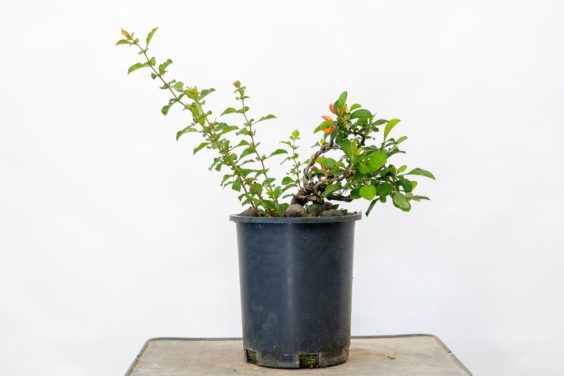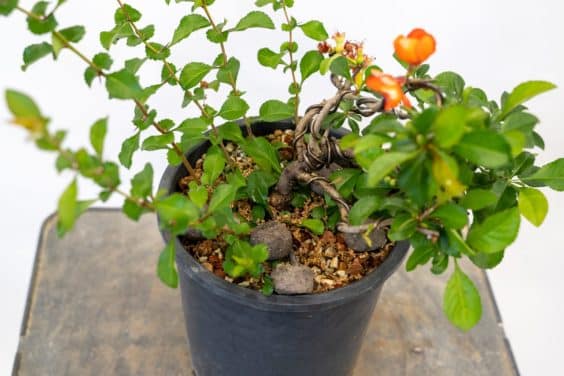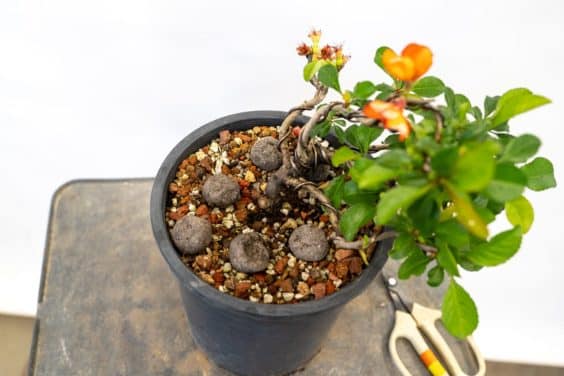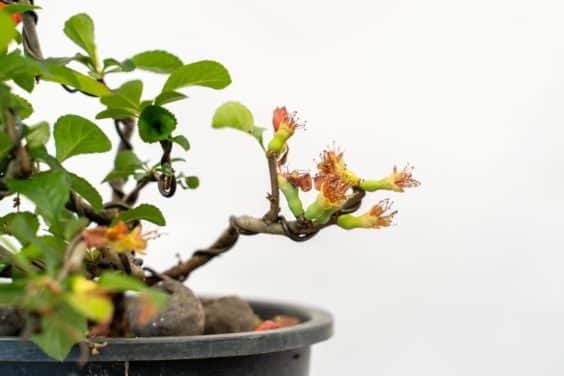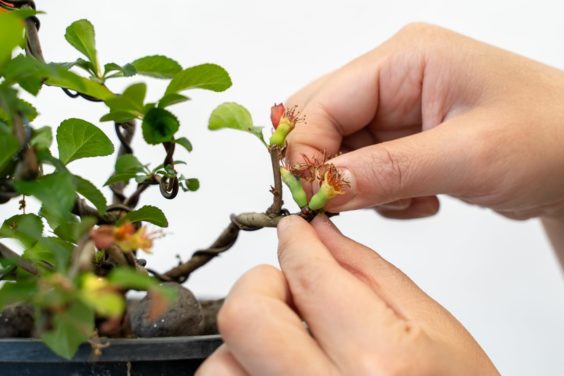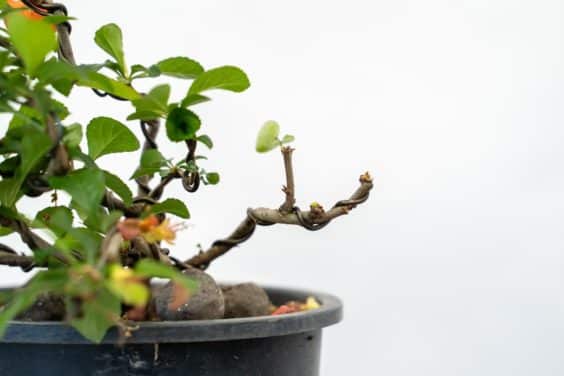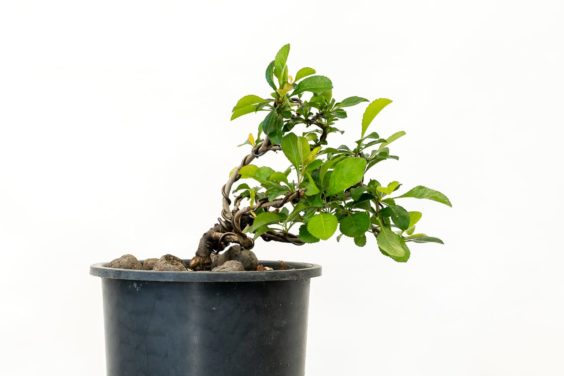Although I typically wait until May or June to start working on deciduous bonsai, there are a few jobs that I try to do sooner rather than later. One of these is removing unnecessary root sprouts.
Root sprouts, or root suckers, are shoots that emerge directly from the roots. As you can see from the photo below, they are often the most vigorous branches on the tree.
Root sprouts (left side) on a Japanese flowering quince
When root sprouts grow freely, fewer resources are available for the branches I’d like to develop. To encourage the tree to produce new growth on established branches, I remove root sprouts whenever they appear.
Root sprouts on the left side of the tree
After removing the root sprouts
After pruning the root sprouts, I’ll remove any flower buds to prevent fruit from forming.
Spent flowers
Removing the spent flowers
These simple maintenance tasks encourage the tree to produce new growth where I want it – on the existing trunk and branches. Here’s the tree after a few minutes of clean-up.
After removing the flowers and root sprouts
I’ll revisit these trees in another month or two to see if new root sprouts have developed. When the wired branches have produced new growth, I’ll look to do cutback and additional wiring.
Learn How to Identify the Next Step: Introducing the Bonsai Development Intensives
I’m kicking off an intensive program this spring with a three-day course scheduled for June 21-23 at my garden in Alameda, California. The program is designed to help you identify next steps for improving trees at all stages of development using bonsai from my collection.
We’ll cover techniques you can use on your own trees this time of year including cutback, wiring, defoliation, and decandling. Over the course of the intensive, you’ll have ample opportunity to work on a mix of conifers, broadleaf evergreens, and deciduous bonsai.
Click here to sign up or to learn more about the Bonsai Development Intensives.
The post Bonsai Development Series #15: removing unnecessary growth appeared first on Bonsai Tonight.

